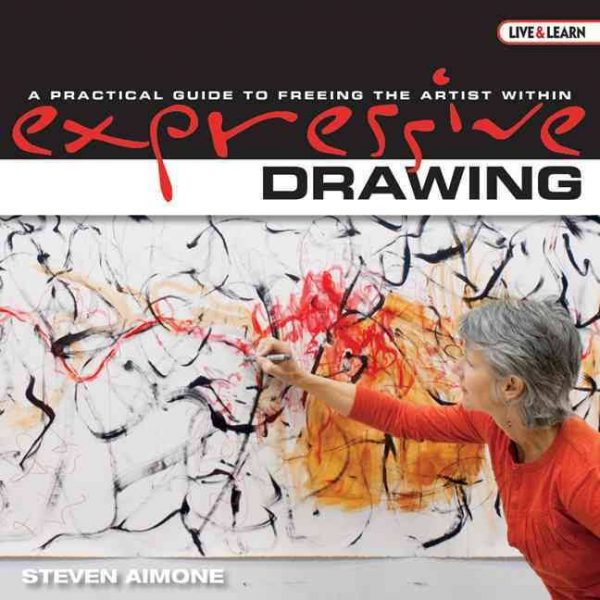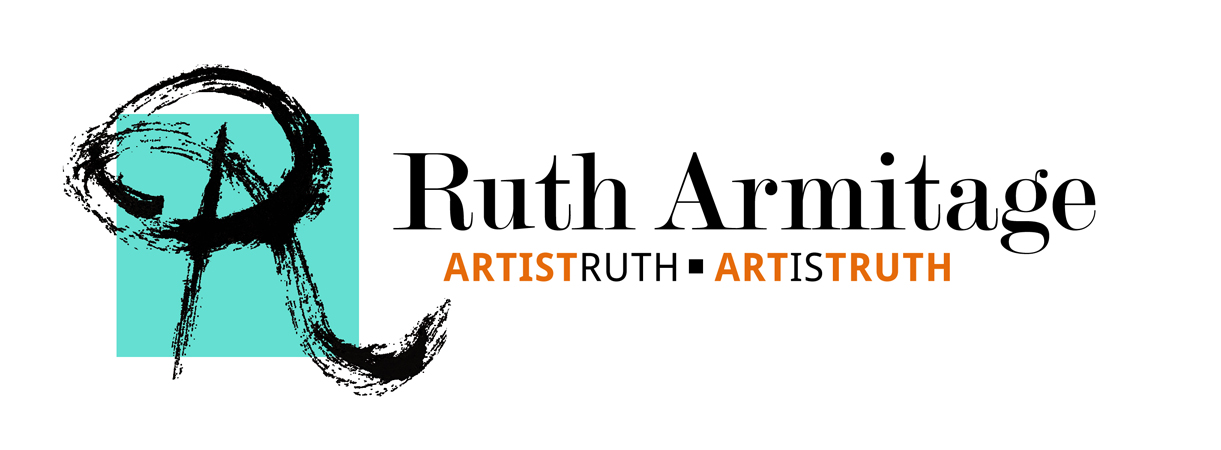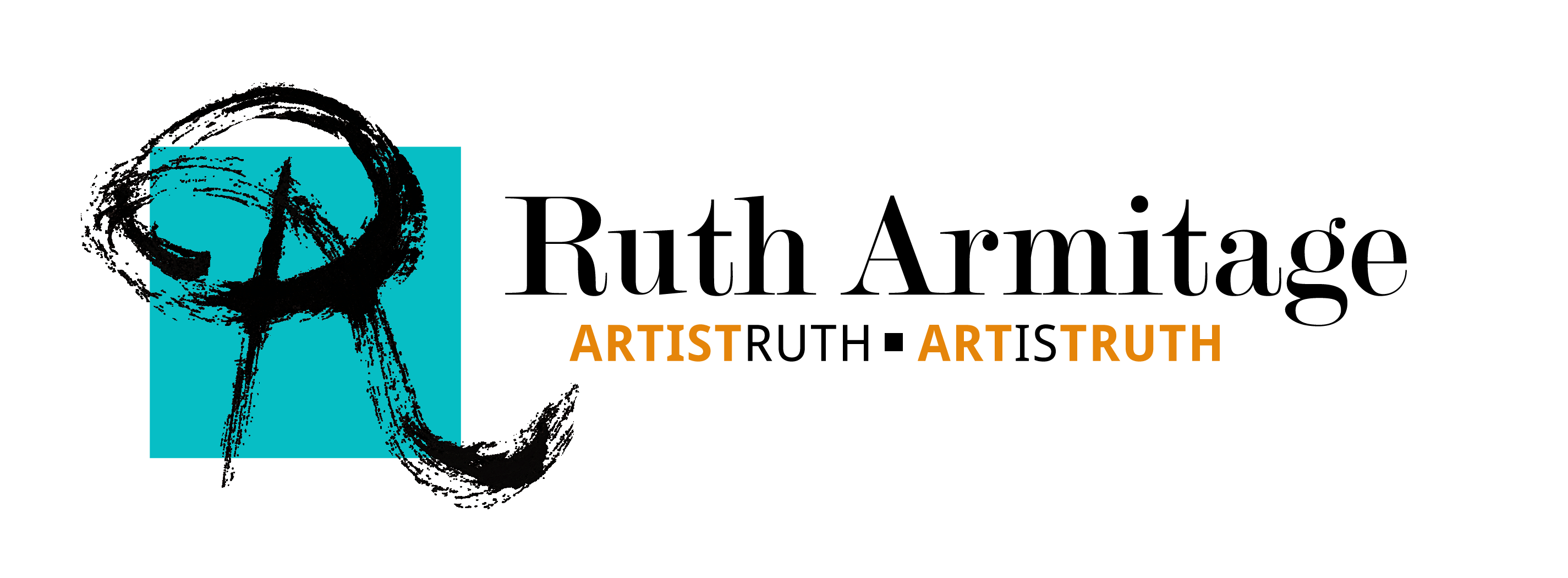My new painting, Breath of Spring, began as an experiment with line in my workshop at Sitka Center for Art and Ecology. One can’t help being influenced by the landscape there. However, in keeping with my series, this work was inspired by memories of the landscape on the farm. Spring breezes always brought out scents of the season…. Mud, blossoms, fresh grass and a chilly breeze are things that I thought of as I worked on this painting.

Breath of Spring, Acrylic on Paper 15″x22″ ©Ruth Armitage SOLD
The gold colors of the background remind me of bare winter branches covered with lichen and moss. Linear elements refer to tree branches and wetlands.
A New Discovery
One of the things I love about teaching is that because I am not trying to make a finished painting, I often take more risks than I would normally take. In this particular painting, I had borrowed a ‘coke bottle’ pen from fellow instructor Rebecca Wild and I tried using it with sumi ink. That wild experiment was so chaotic that I used a brayer to roll the light gold color over most of it, allowing only hints of it to peek through. The resulting texture was so attractive to me. Another discovery occurred during one of the line exercises I set in class. The small, staccato-like white marks grew out of that exercise.
Give it a Try
If you enjoy painting, you might like to try the same exercise.
- Assemble as many mark-making tools as you can find: brushes, pens, pencils, sticks, pastels, crayons, graphite, charcoal, black and white paint, etc.
- Begin by making marks that vary from thick to thin.
- Experiment with clustering the lines together, and then letting a few stand alone.
- Vary the direction of your lines.
- Use some broken lines and some continuous.
- Try for a wide variety.
- As you work, you might consider veiling or obliterating some of the lines that stand out too much.
- Restate some of the lines with a different media.
- Change medias frequently.
- Listen to music as you make lines inspired by the rhythm.
- Make lines that imitate letter forms, but are not legible.
- Use your non-dominant hand to draw several lines.
- Make a few lines to convey anger, calm, confusion, movement, etc.
- After about 15 minutes of work, step back.
- Decide which lines felt most comfortable to you, and which ones are new to your vocabulary.
This exercise is adapted from Steven Aimone’s Book “Expressive Drawing.” I seem to have misplaced my copy 🙁 If you have seen it, please let me know!
Finally, last call to submit images for the reader’s gallery! I appreciate your time and readership.

Missing in Action! Reward for its return!



Can’t wait to try the exercise
I guess one needs to have some steps to start an abstraction
Thanks Chris! Glad you like the ideas!
I’m looking forward to trying your suggestions, too! Thanks for a great blog, Ruth!!!
Thank you Jansi 🙂
So Ruth, you want me to draw some lines when I’m sitting in the middle of several hundred colored pencils. Each pencil at least twenty years old, lightly or unused all suffering from neglect. What a good time to give them a good workout!
Sally
Great idea Sally! 🙂
Thanks Ruth…you have a great blog and I appreciate all the know,edge you generously share with others.
Thanks Elizabeth!